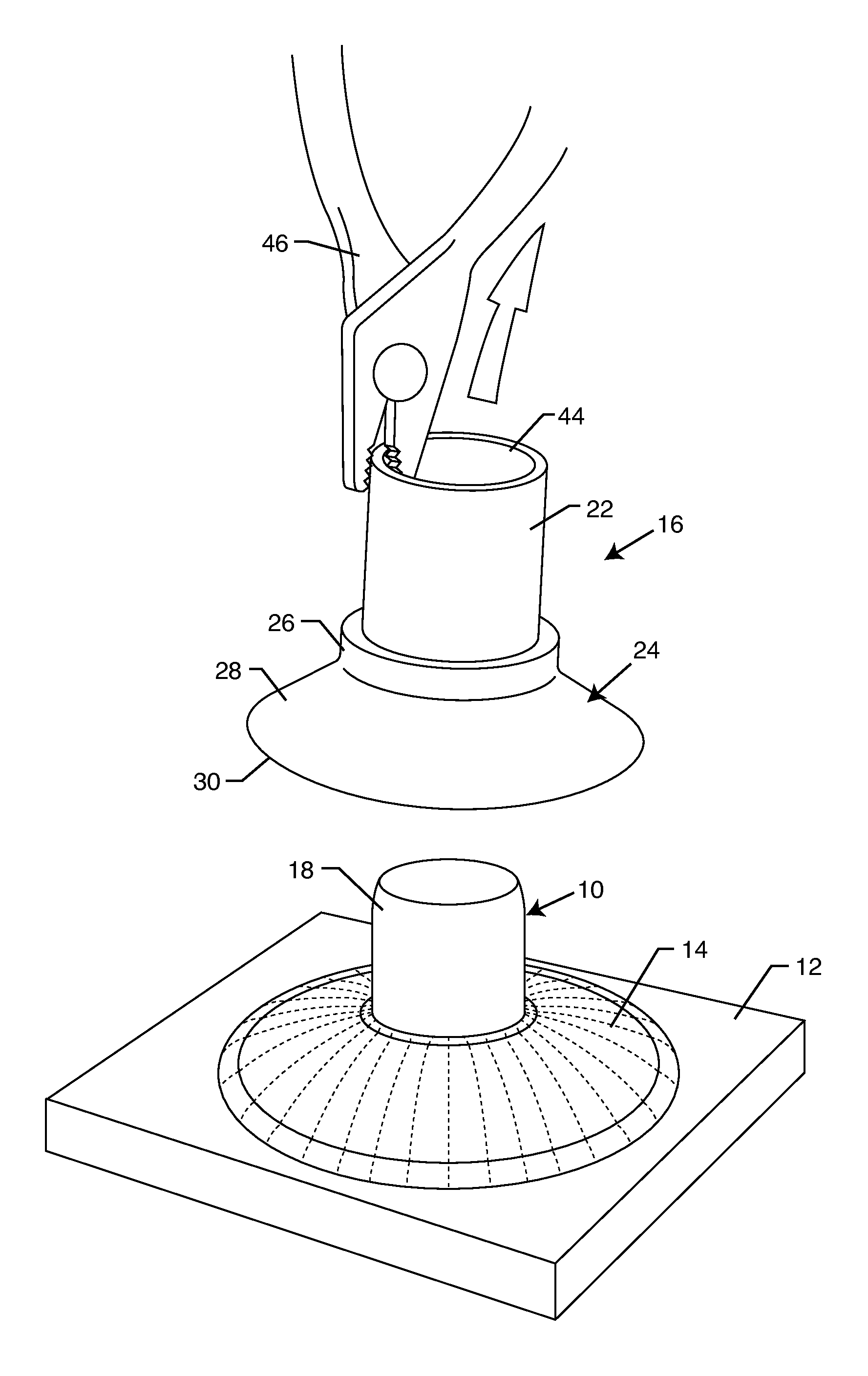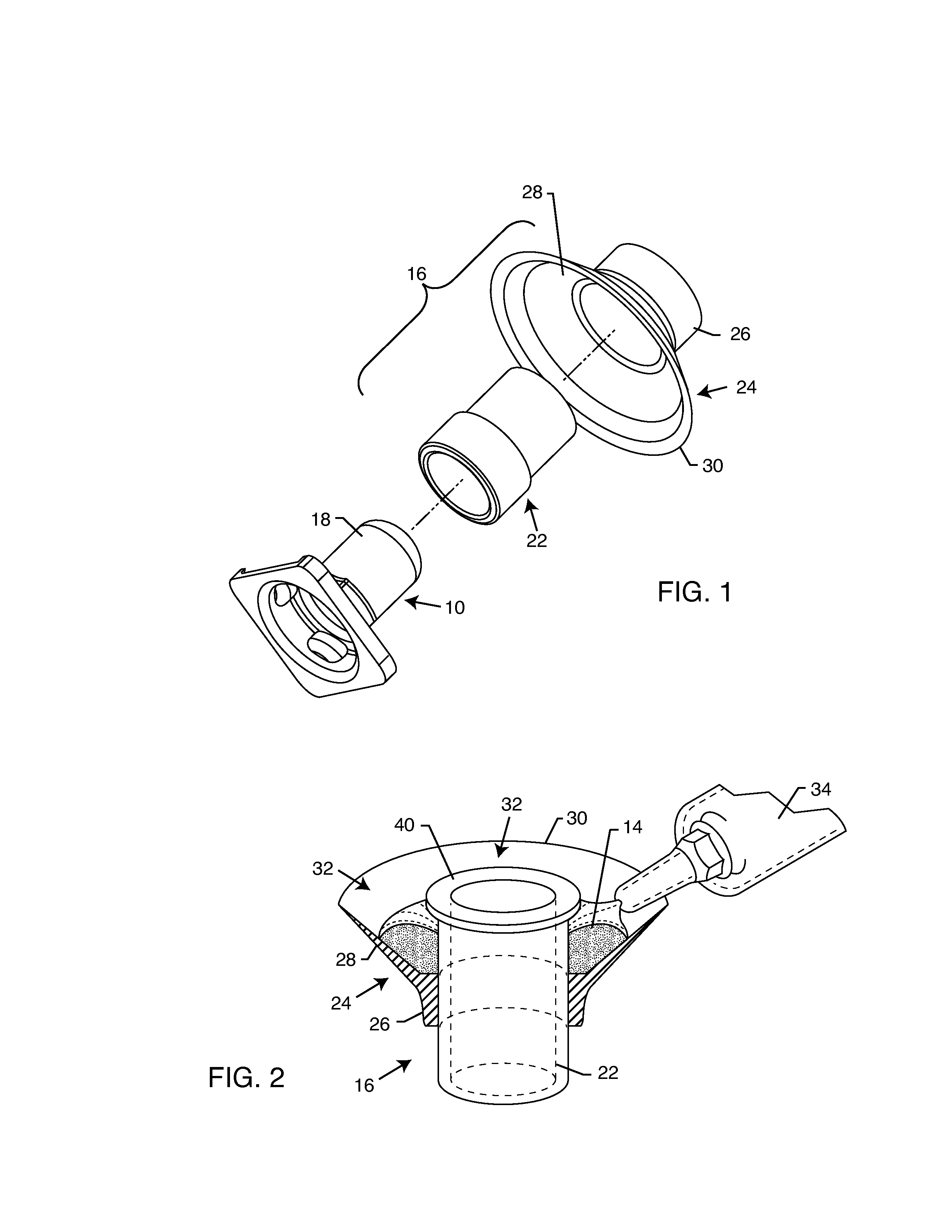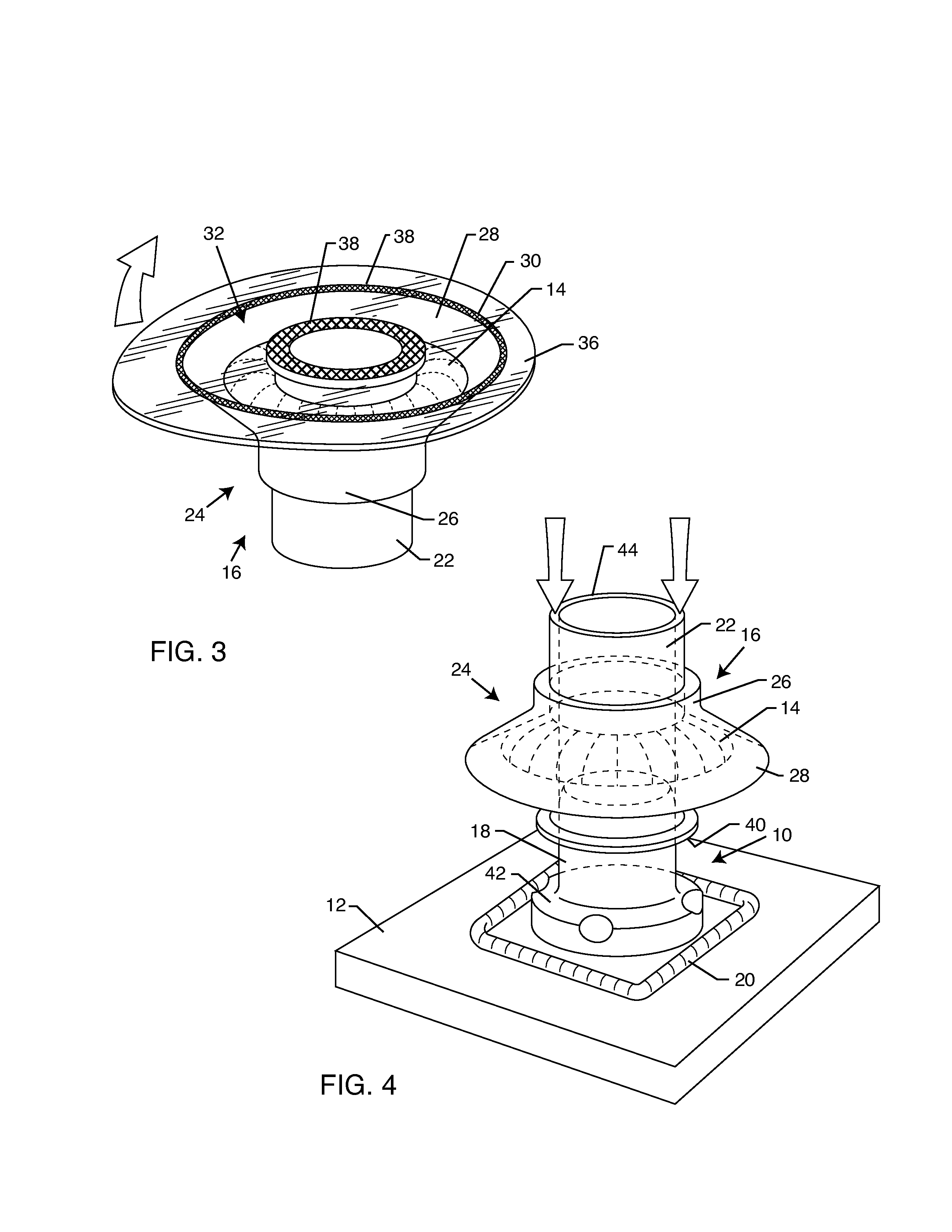Sealant mold fixture for a dome element
- Summary
- Abstract
- Description
- Claims
- Application Information
AI Technical Summary
Benefits of technology
Problems solved by technology
Method used
Image
Examples
Embodiment Construction
[0034]As shown in the exemplary drawings, a domed nutplate unit 10 or the like (FIGS. 1, 4 and 6-7) mounted onto a selected substrate 12 (FIGS. 4-7) is effectively and relatively quickly sealed by means of a curable sealant material 14 (FIGS. 2-7) applied by a sealant mold 16 (FIGS. 1-7) of the present invention. The sealant material 14, when cured, is applied in a limited amount and a controlled but substantially minimum and uniform thickness layer for securely coating and covering an attachment interface between the domed nutplate unit 10 or the like and the substrate 12. That is, the cured sealant material effectively seals between the substrate 12 and a dome or dome element 18 (FIGS. 4, 6 and 7) of the nutplate unit 10 or the like to safeguard the sealed attachment interface against degradation or fluid leakage. After the sealant material is substantially completely cured, the sealant mold 16 of the present invention is stripped quickly and easily from the cured sealant material...
PUM
| Property | Measurement | Unit |
|---|---|---|
| Length | aaaaa | aaaaa |
| Size | aaaaa | aaaaa |
Abstract
Description
Claims
Application Information
 Login to View More
Login to View More - R&D
- Intellectual Property
- Life Sciences
- Materials
- Tech Scout
- Unparalleled Data Quality
- Higher Quality Content
- 60% Fewer Hallucinations
Browse by: Latest US Patents, China's latest patents, Technical Efficacy Thesaurus, Application Domain, Technology Topic, Popular Technical Reports.
© 2025 PatSnap. All rights reserved.Legal|Privacy policy|Modern Slavery Act Transparency Statement|Sitemap|About US| Contact US: help@patsnap.com



